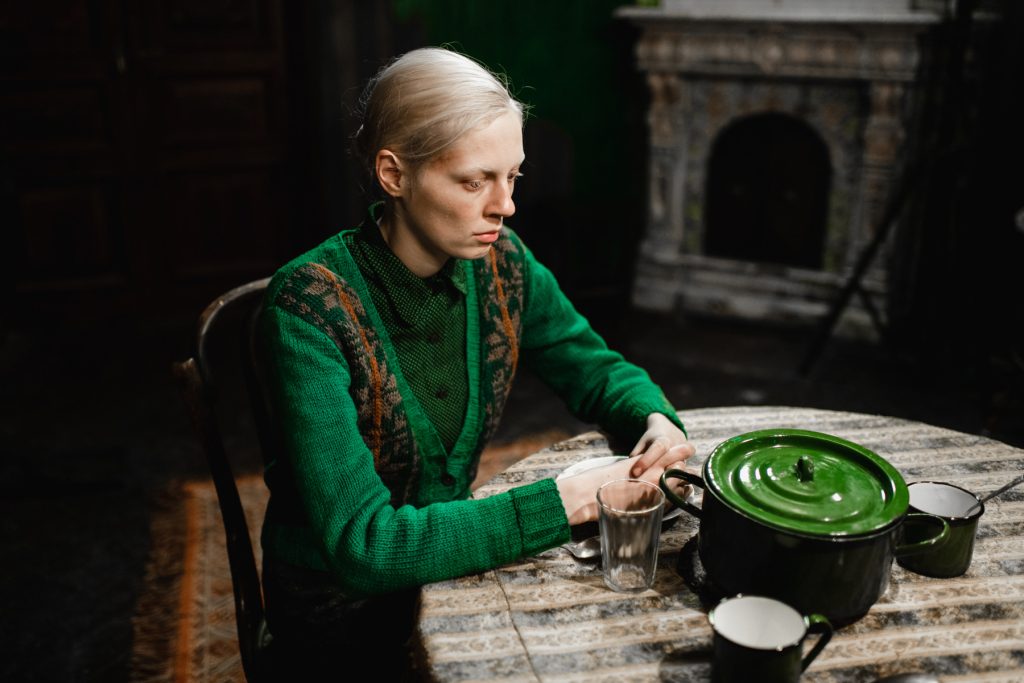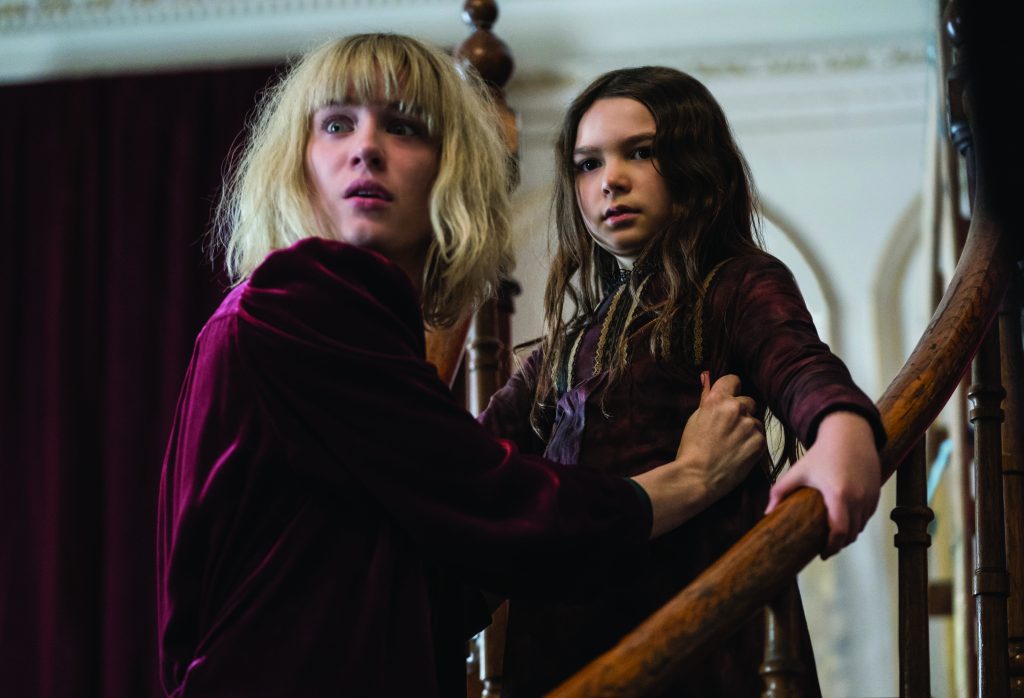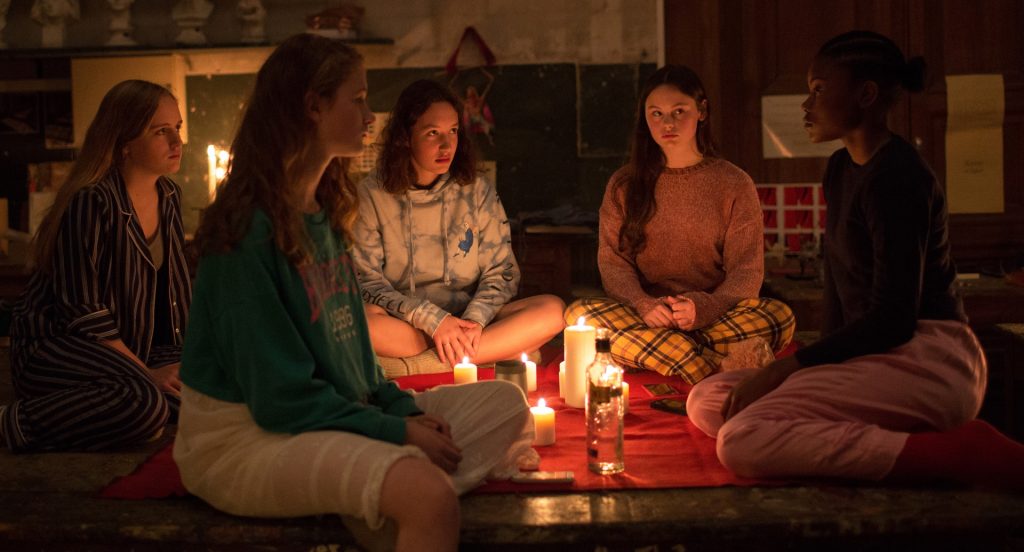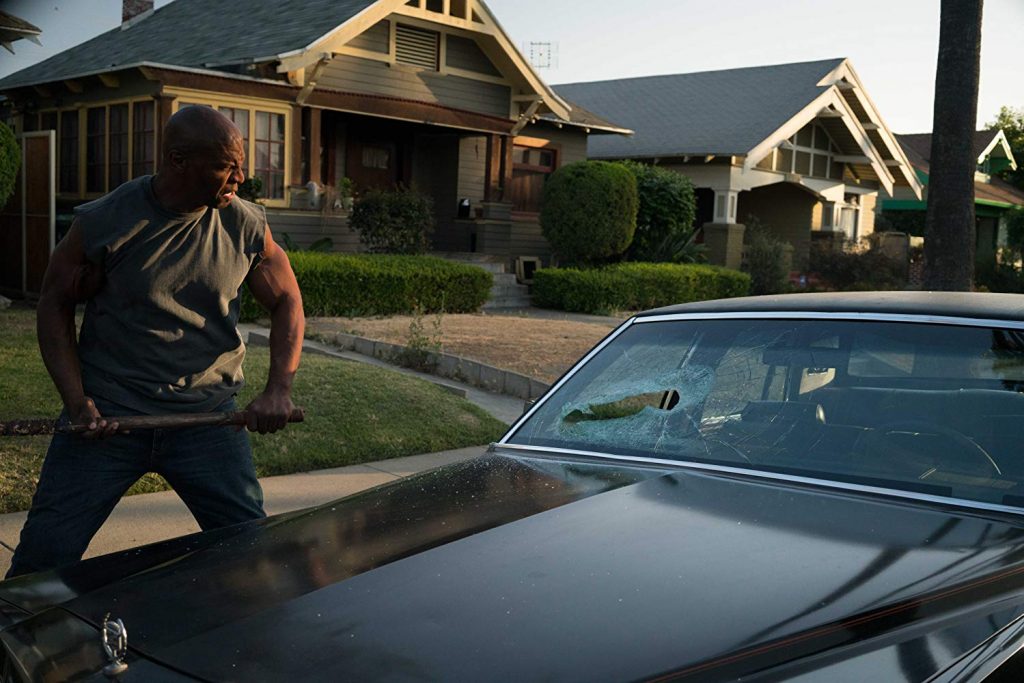January 29, 2020
by Carla Hay

Directed by Kevin Ward
Culture Representation: Taking place in modern-day California, the story of “A Patient Man” centers on a group of middle-class, mostly white working professionals in their 30s and 40s.
Culture Clash: A widower whose wife died in a car accident has trouble coping with his grief and has conflicts over his mental stability after finding out that his wife had been cheating on him.
Culture Audience: “A Patient Man” will appeal primarily to people who like to seek out under-the-radar independent movies and don’t mind if the plot is as flawed as the movie’s main characters.

“A Patient Man” is not the kind of movie where people should ask themselves, “What would I do in this situation?” That’s because there are so many plot holes in the story that you would just sink into hypothetical quicksand that threatens to bury any logical thoughts whatsoever. That being said, the movie’s cast members deliver solid performances in this relentlessly somber film, even if the story is based on an extremely flawed concept.
When viewers first see Tom Alexander (played by Jonathan Mangum), he seems to be a mild-mannered man, as he rides his bicycle at night on city streets and as he gets on a commuter train with the bike. A woman on the train asks where Tom’s friend is because she’s used to seeing them together on the train. Through flashbacks that aren’t in chronological order, the story unfolds about who Tom is, how he got to know his commuter friend on the train, and how it all ties in to a chain of events revealed at the end of the film.
Tom works in logistics for a company whose clients are manufacturing companies. His job is to advise clients on how to save money and increase their profit margins, based on how they handle their products. When viewers see Tom going to his job for the first time, he’s greeted by office workers who are happy to see him, but they also react to him with awkward, sympathetic looks and tell him that they’re sorry about what happened.
That’s because, as seen through flashbacks, Tom was on a leave of absence for several months after he was in a traumatic car accident. He was driving the car, and his attorney wife Beth Alexander (played by Katie F. Ward), who was in the front passenger seat, died in the car accident. The accident happened when they were at an intersection and were blindsided by another car that hit them. Tom’s air bag worked, but Beth’s didn’t, and she was killed instantly. (He and Beth have no children.)
The accident resulted in Tom getting serious injuries that left him barely conscious. While in the hospital, he finds out from his trusted work colleague Maya (played by Elaine Loh) that the man who caused the accident had called his lawyer, who was there at the accident scene before the police even arrived—an indication that the guy who plowed into Tom’s car might be hiding something illegal, such as he might have been driving while intoxicated. During Tom’s hospital stay, Maya suggests to Tom that he sue the guy, but Tom doesn’t want to do that because he and the other driver are both insured.
Now, this is where the plot falls apart. Without revealing any spoilers, it’s enough to say that in order for this movie to be believable, you’d have to be convinced that after Tom’s wife has died in a preventable car accident caused by another driver, he doesn’t think the other driver should be held legally responsible through a criminal case or through a lawsuit. In reality, police and lawyers would definitely be involved, but that’s never shown in this movie.
In addition, the way that Tom finds out the identity of the driver is convoluted and completely ludicrous. In the real world, it would be information that he could easily get through a police report or his insurance company. This wasn’t a minor fender bender. This was a car wreck that resulted in someone’s death, and the driver who caused the accident could be in legal trouble because of it. And with insurance companies involved too, there would have to be an investigation, so the drivers’ identities wouldn’t be mysteries to each other. But the movie ignores all those pesky details and goes straight into Tom playing private detective on his own, with some assistance from Maya.
Several scenes in the movie show Tom in the office of his female therapist (played by Kelsey Scott), who notices that Tom is oddly detached from his emotions, because she has to point out that he won’t even say Beth’s name. Tom tells the therapist that before his wife’s death, he was mildly content. After her death, all the things that he used to enjoy seem trivial to him now. Tom’s therapist tells him that although people can grieve in different ways, his avoidance of dealing with the emotional pain could hurt him in the long run. She recommends that he go out and meet new people.
Because of the trauma over the car wreck, Tom has not been in a car since the accident, which is why he rides a bike and takes public transportation to get around. While on the train, he strikes up a conversation with a fellow commuter named Aaron Clarke (played by Tate Ellington), and they later see each other on the same train on a regular basis. At first, they engage in small talk, but over time, they begin to open up about their lives. Aaron is a lawyer who’s married, but he confesses that he’s a “jerk,” and things aren’t going so well in his marriage.
As for Tom, viewers find out from a therapy session that Tom’s grief over his wife’s death is complicated because, although he was in love with Beth and thought they had a good marriage, he found out after she died that she had been cheating on him. Maya knew about the affair, and she told Tom after Beth died that the only thing that she knew about Beth’s lover was what Beth told her: He was someone Beth knew for a long time, and their secret trysts would often happen because Beth would lie to Tom by saying she was away on a business trip.
The movie makes a giant illogical misstep by having Tom enlist Maya to help him find out who Beth’s lover is, when all Tom had to do is check Beth’s cell phone records, which he would be entitled to do after her death. A flashback in the movie shows that her mystery lover called Beth on her cell phone on the day of the car accident, so we know she wasn’t using a secret phone to communicate with him.
Because so much of the movie’s premise relies on Tom wanting to find out who was having the affair with Beth, it spends a lot of unnecessary time showing Tom acting like a stealth detective, when it’s just a smokescreen for lazy screenwriting that lacks common sense. Conveniently, Tom and Beth don’t have any family members or friends in the movie, in order to make it obvious that Tom is isolated and can’t find out answers through people who might have been close to Beth.
There’s also a minor subplot about Tom’s return to his job and how his state of mind affects his work performance. After a co-worker retires, Tom’s boss George (played by David Jahn) privately tells Tom that he wants to promote Tom into the open position vacated by the retired employee. However, Tom’s ambitious and condescending co-worker Rami (played by Amir Talai) wants the promotion and has been openly campaigning for it.
Tom doesn’t really want the promotion, but George ignores Tom’s wishes and tells him that he wants Tom and Rami to do a presentation to junior colleagues, and the person with the better presentation will get the promotion. It should come as no surprise that Tom deliberately sabotages his own presentation.
Meanwhile, Tom takes his therapist’s advice to meet new people, and he asks fellow bike enthusiast Rami if he knows of any biking groups that he could join. Rami invites Tom to join a group of nighttime bike riders called the Night Riders. It might be Tom’s way of trying to get back to a normal life, but it’s also clear from what happens in the movie that Tom’s obsession to find out the identity of Beth’s lover is anything but normal.
Does Tom find out who was having an affair with his wife? And what about the man who caused the car wreck? Those are questions that are answered in the movie, which has key plot points that can be easily predicted halfway through the film.
“A Patient Man” is the feature-film debut of writer/director Kevin Ward, who seems to have a lot of potential as a filmmaker, if he works with a better script. The movie’s technical choices (such as editing, musical score and cinematography) work very well for a low-budget independent film. But the woefully ludicrous plot ultimately sinks this movie, which will be a letdown to people looking for a good mystery story.
Commuter Productions released “A Patient Man” for online purchase on January 17, 2020. The movie’s VOD release is on February 7, 2020.
















